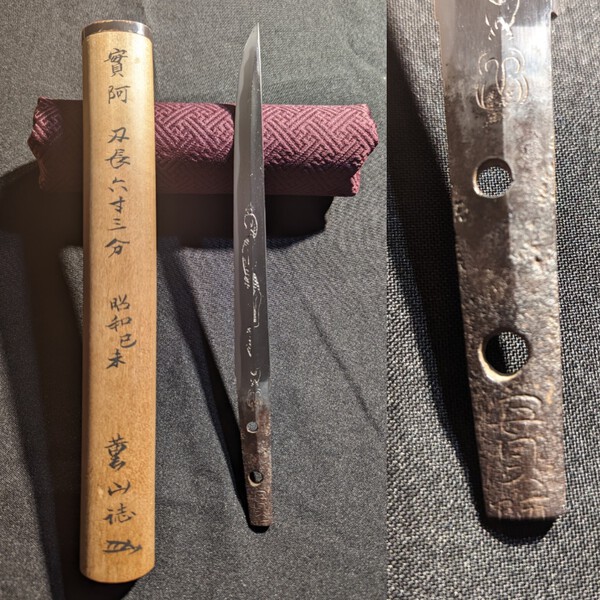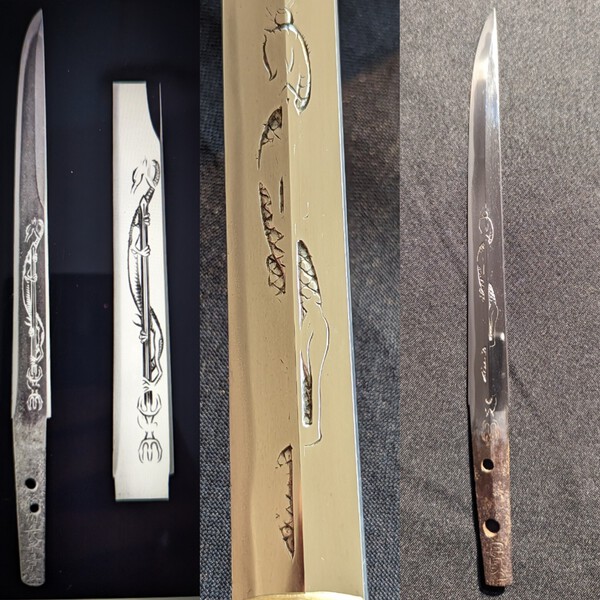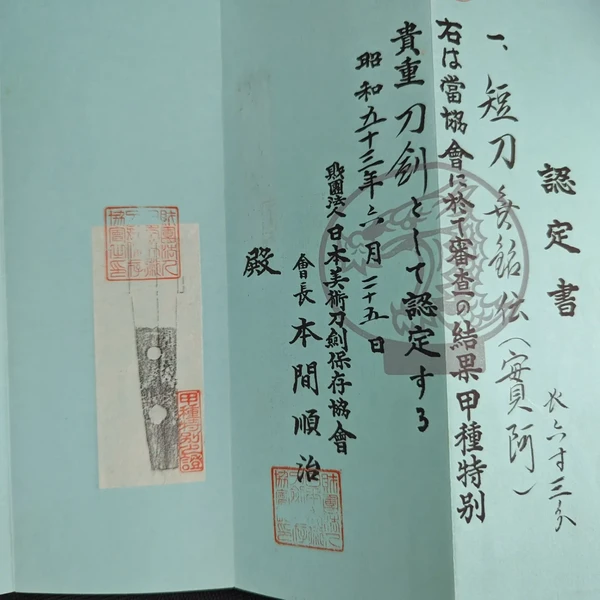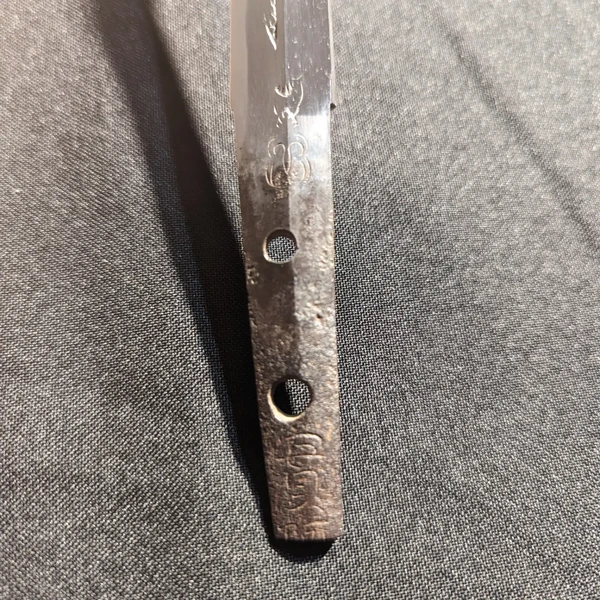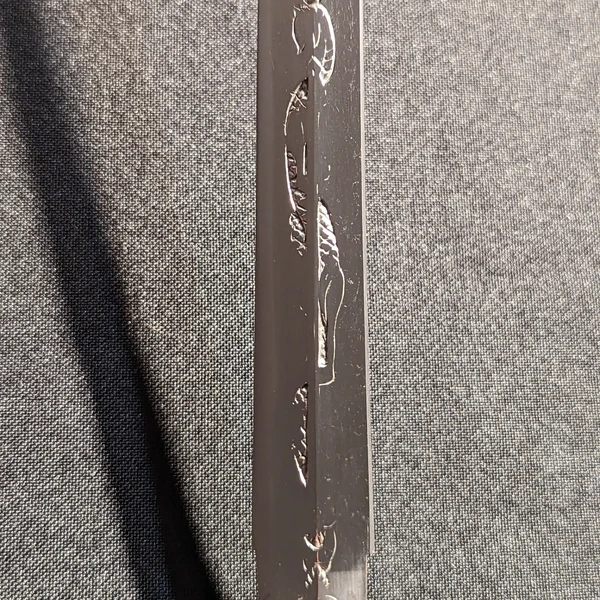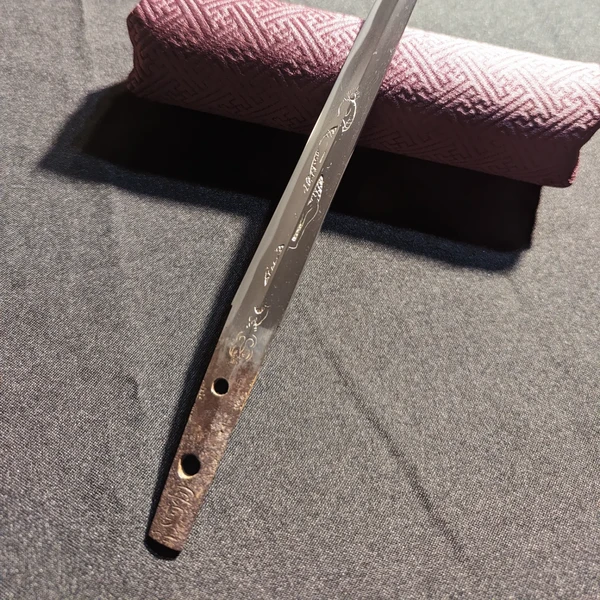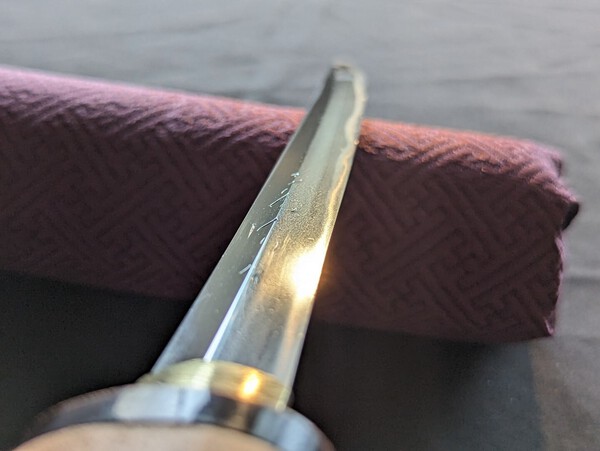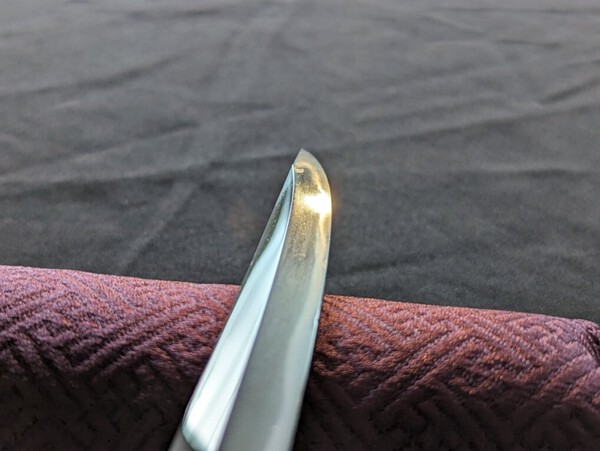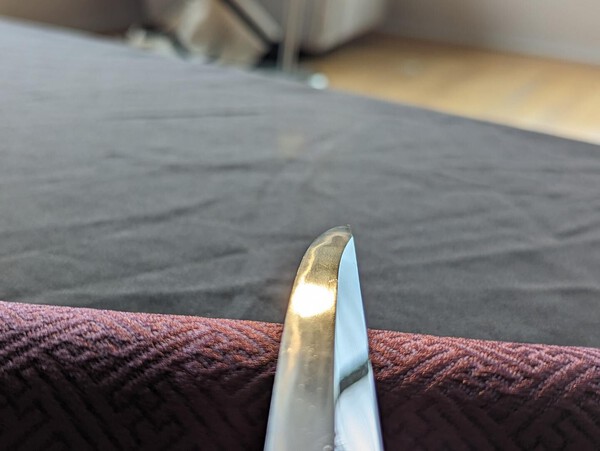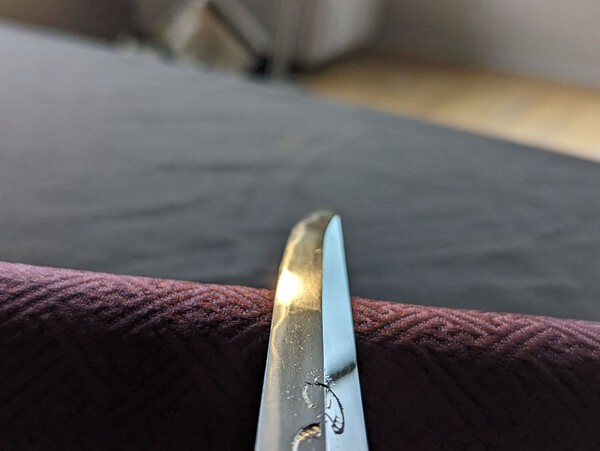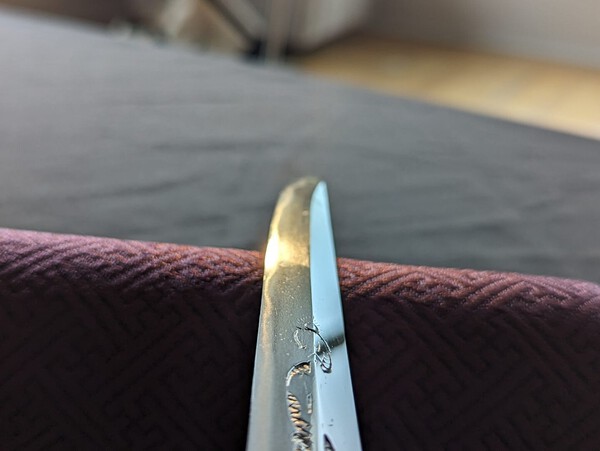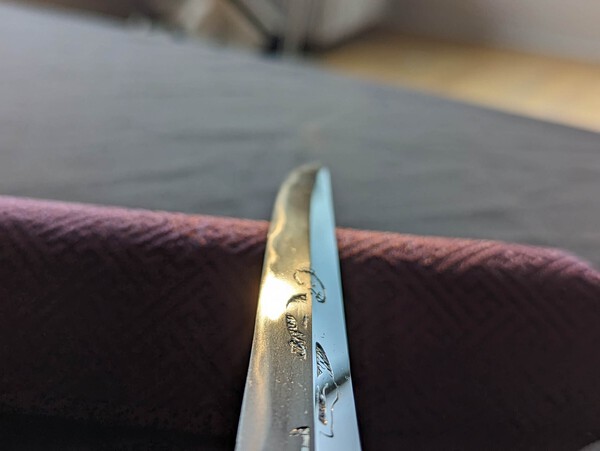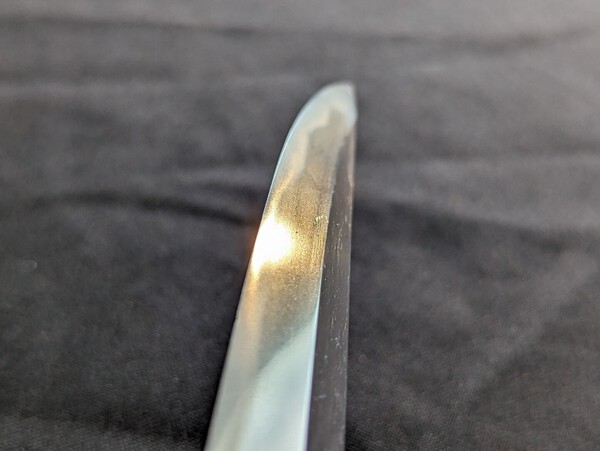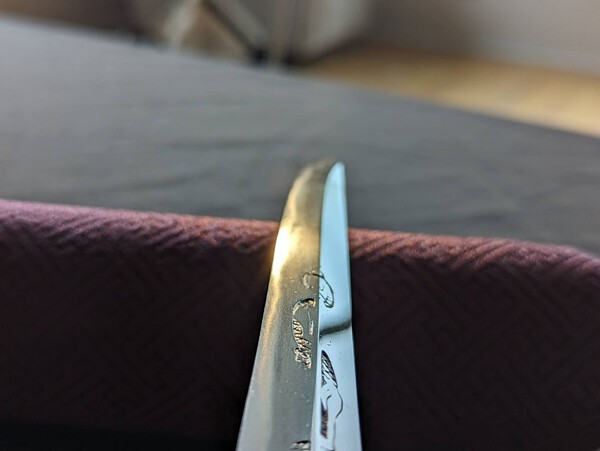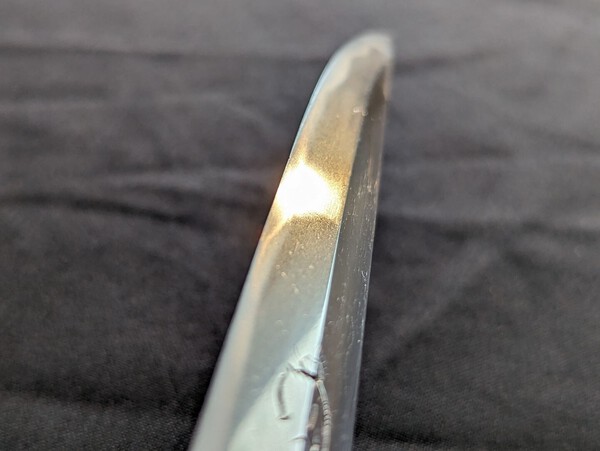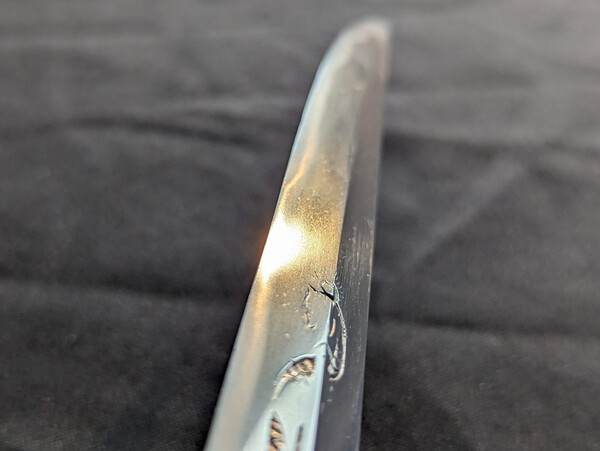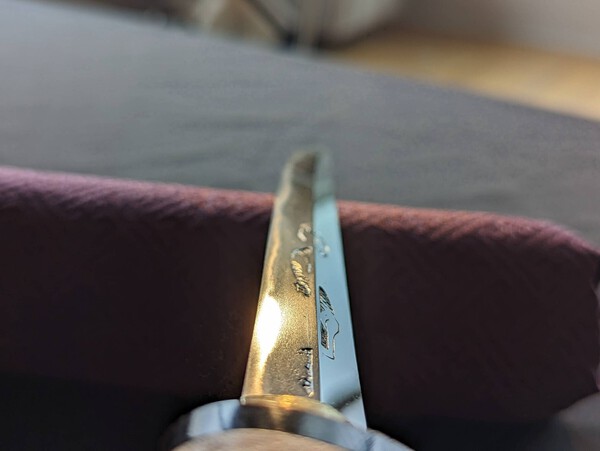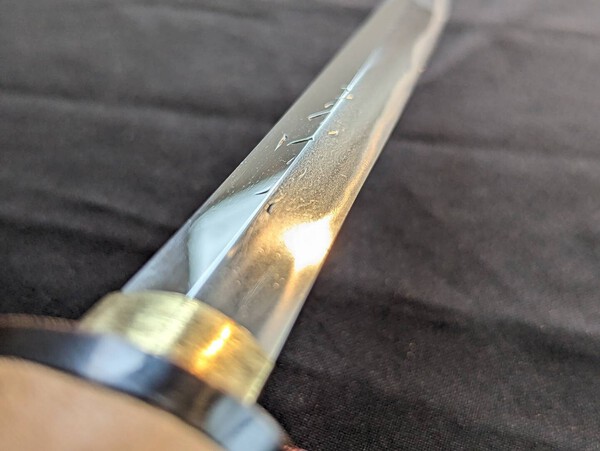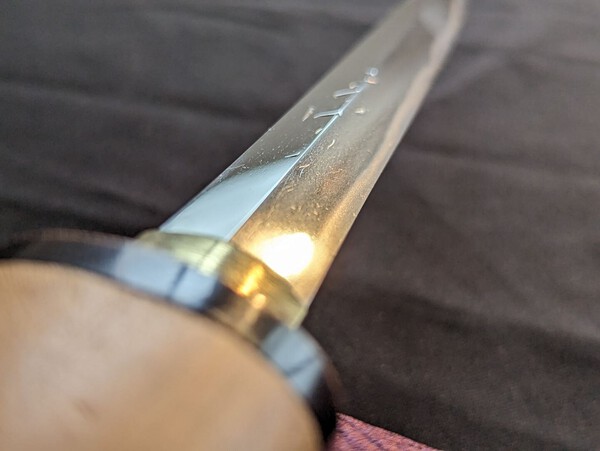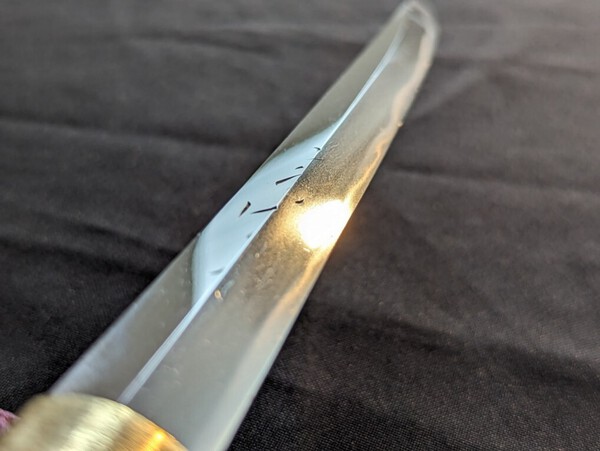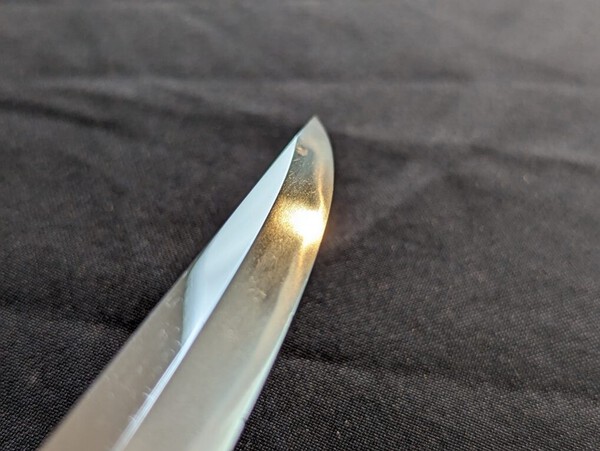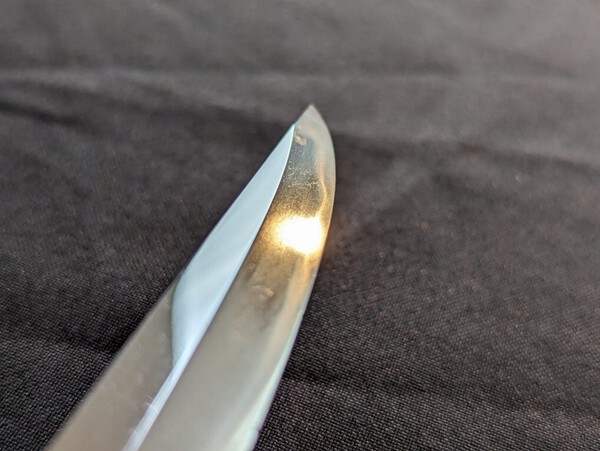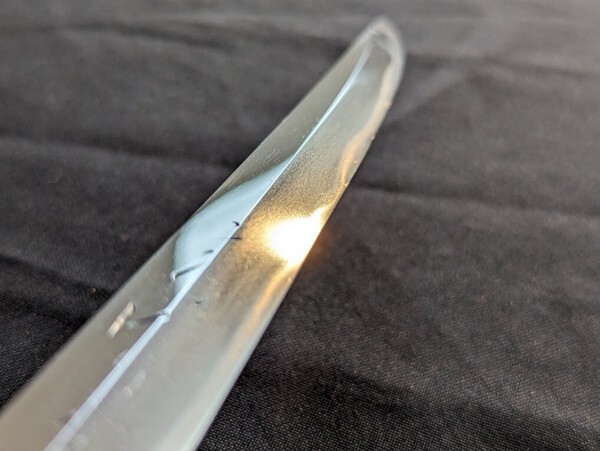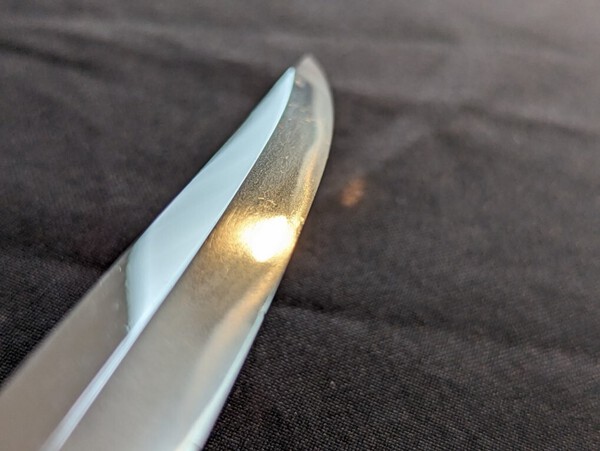Very interesting koto tanto with a long dragon horimono much in the style of Bizen Kagemitsu. Fine itame hada and bright notare-based hamon in ko-nie with some fine sunagashi. The blade appears to be suriage but has a mei of Jitsu’a. Markus Sesko’s bio for this smith is below. The blade has old Koshu Tokubetsu Kicho ninteisho, but needs to go to Tanobe-sensei and/or the NBTHK for a more current evaluation. At minimum, I agree with the time period, that this is plausibly a late Kamakura tanto and one which shows high quality workmanship.
JITSU´A (実阿), Karyaku (嘉暦, 1326-1329), Chikuzen – “Jitsu’a” (実阿), “Jitsu´a saku” (実阿作), “Chikuzen no Kuni Umi Jitsu´a saku” (筑前国宇美実阿作), according to tradition the son of Sairen (西蓮) and the father of Ō-Sa (大左), some sources list two generations Jitsu´a and forward the following approach: The 1st gen. Jitsu’a was supposedly working around Ninji (仁治, 1240-1243) and Kangen (寛元, 1243-1247) in Bungo province and belonged there to the local lineage of Chōen (長円). The son of this 1st gen. was Sairen. When Sairen moved from Bungo to Hakata (博多) in Chikuzen province, his son followed him and eventually settled in Umi (宇美) and this son was the 2nd gen. Jitsu´a. Anyway, we only know date signatures of the second year Karyaku (1327), the third year Genkō (元弘, 1332), and the second year of Kenmu (建武, 1335). His blades have a rather wide mihaba, itame-nagare with a tendency to shirake, the hada can also stand out, the jigane looks soft, the hamon is a suguha with kinsuji interwoven in the ha-hada along the habuchi, Jitsu´a signed the character for “Jitsu” in the old manner (實), jō-saku ◎

